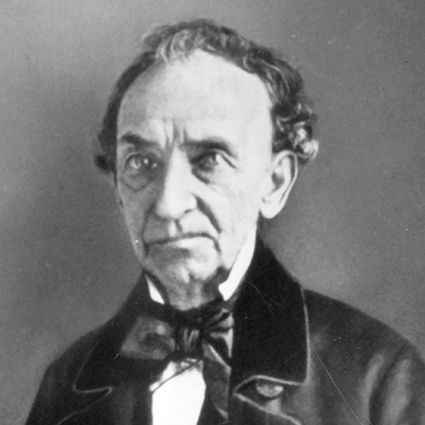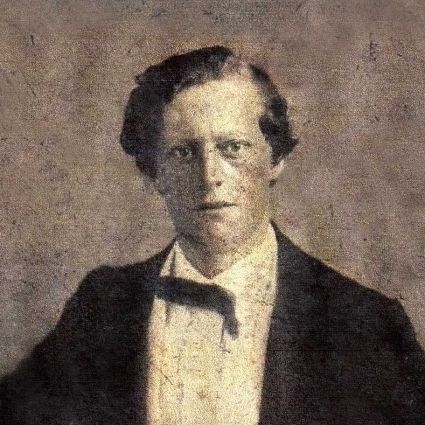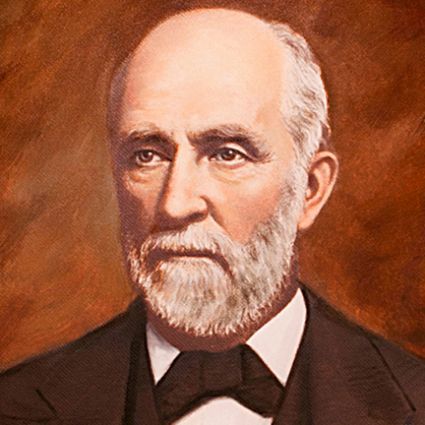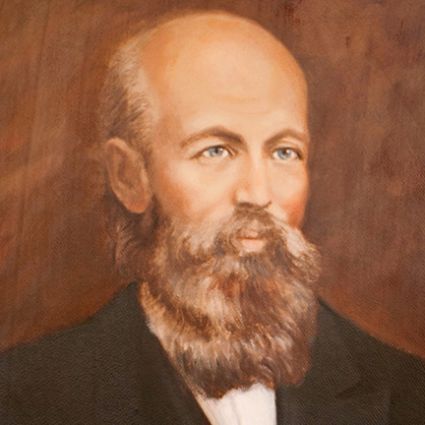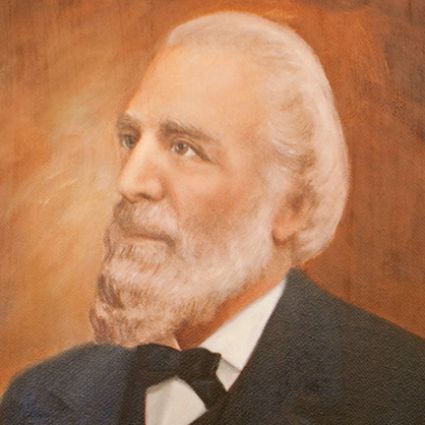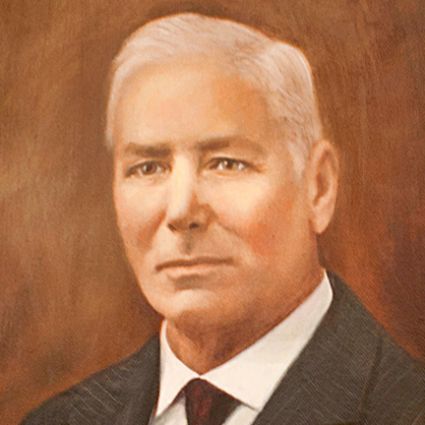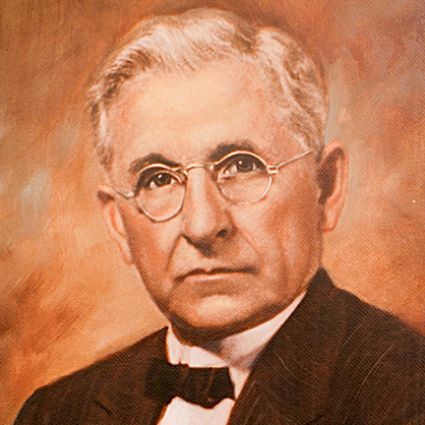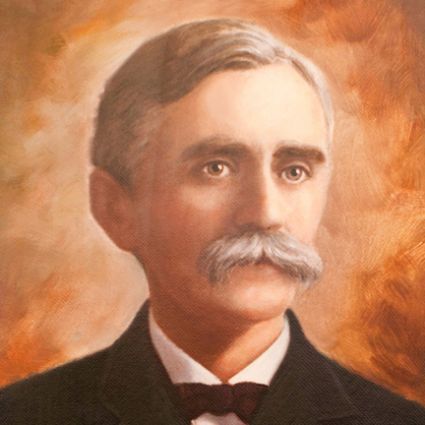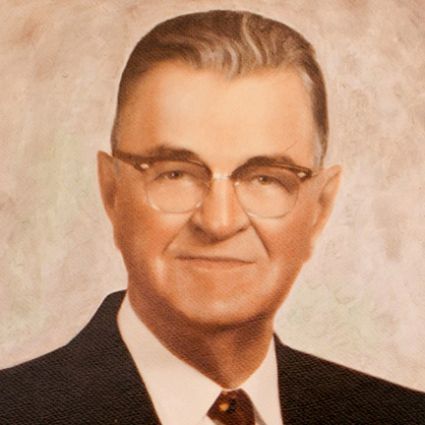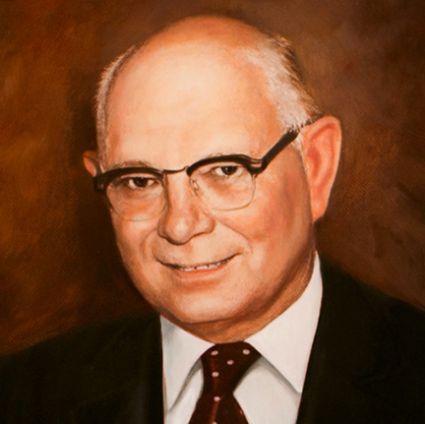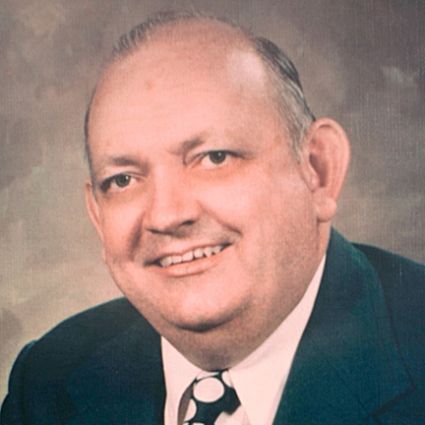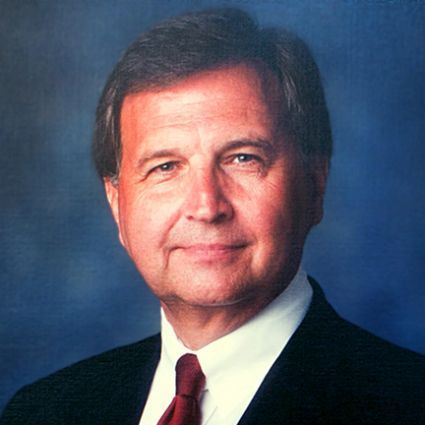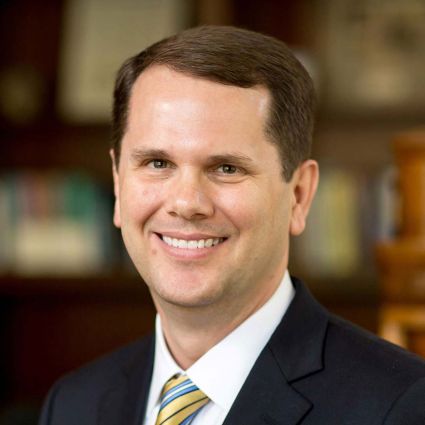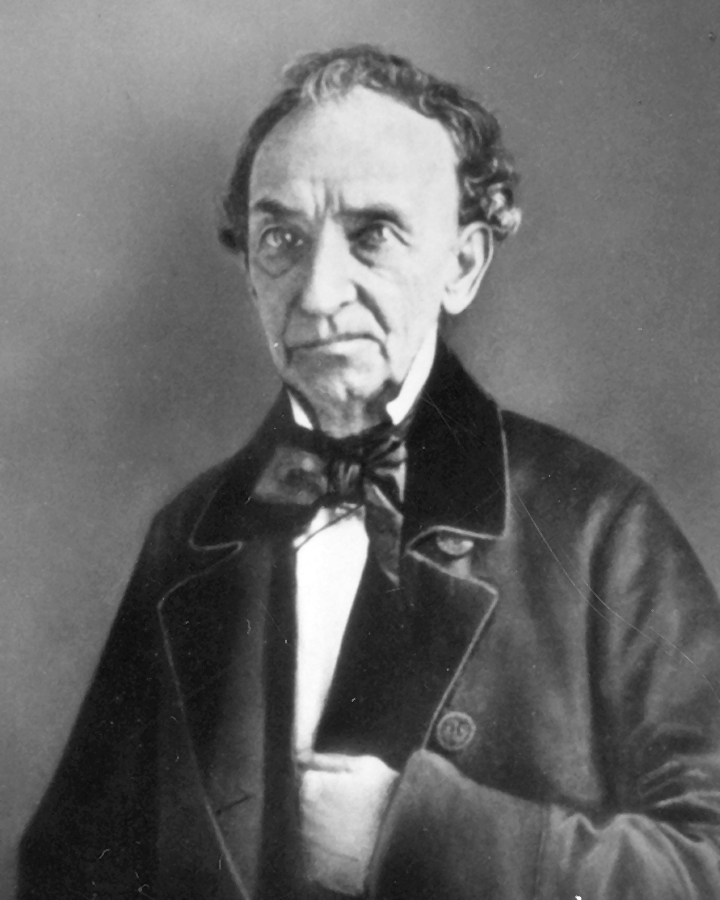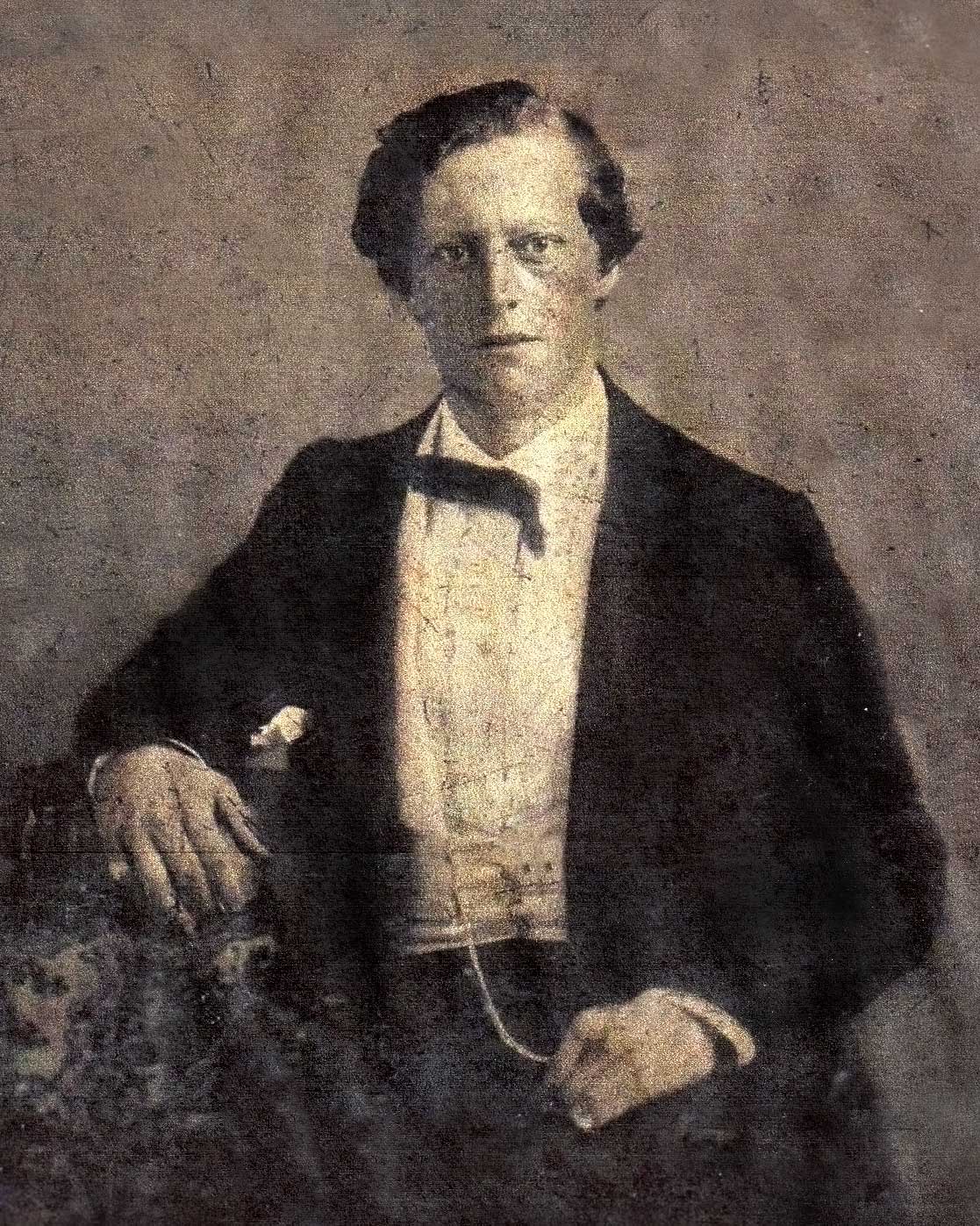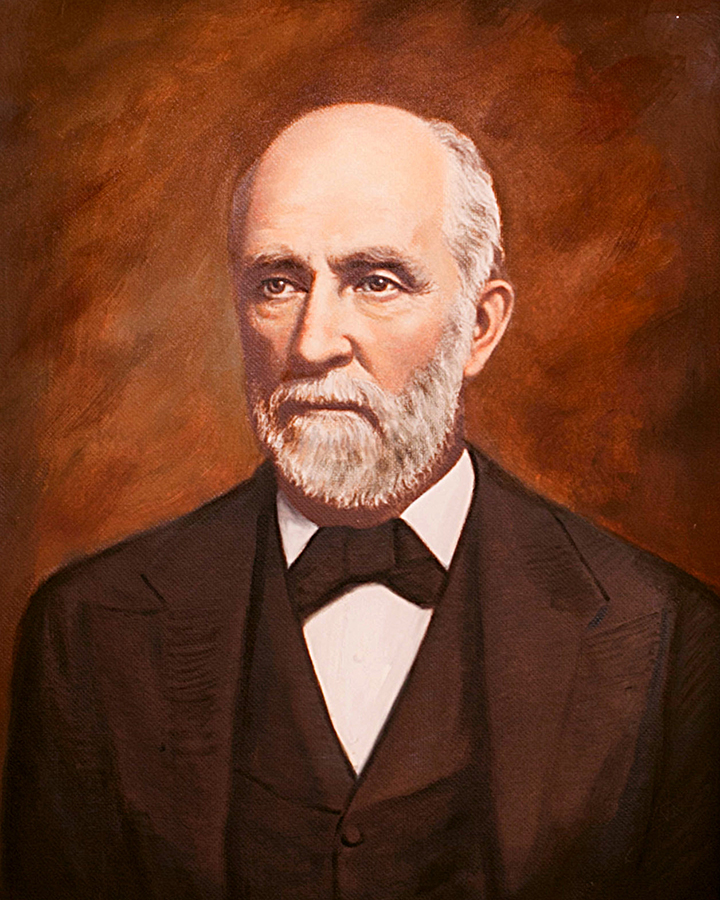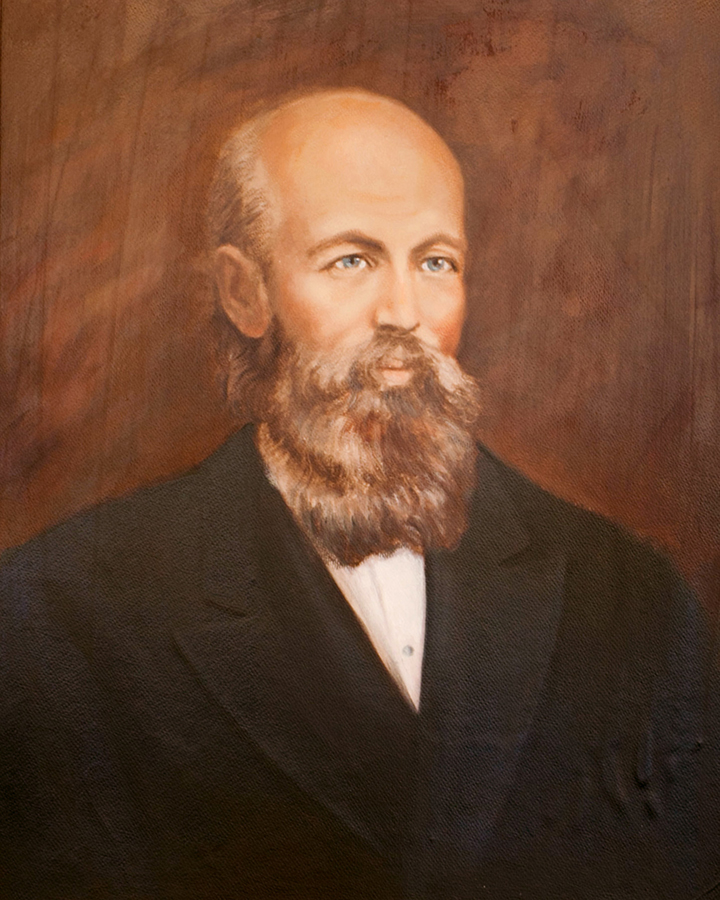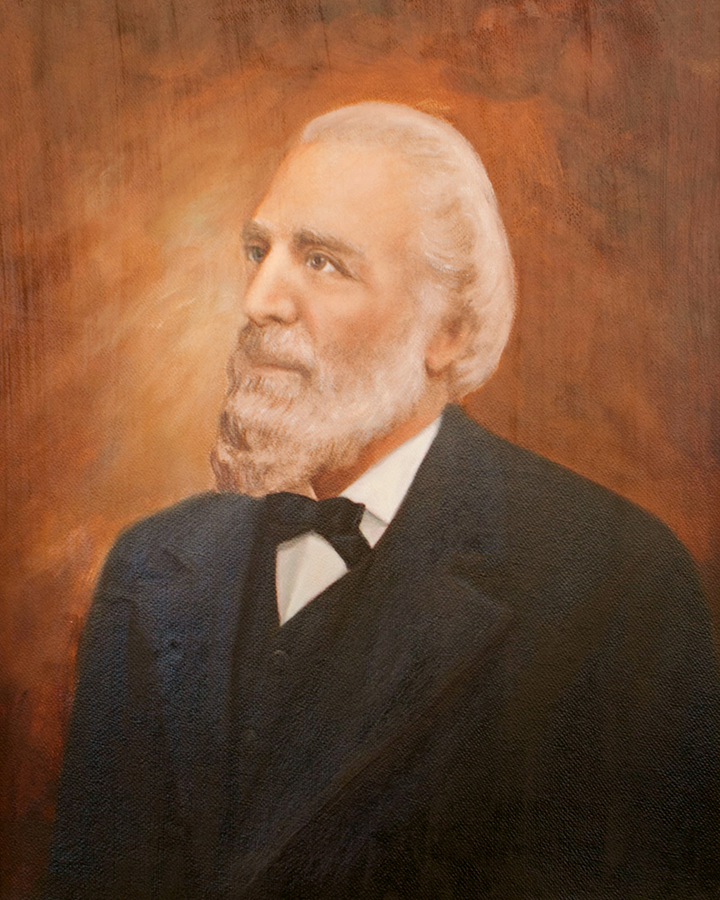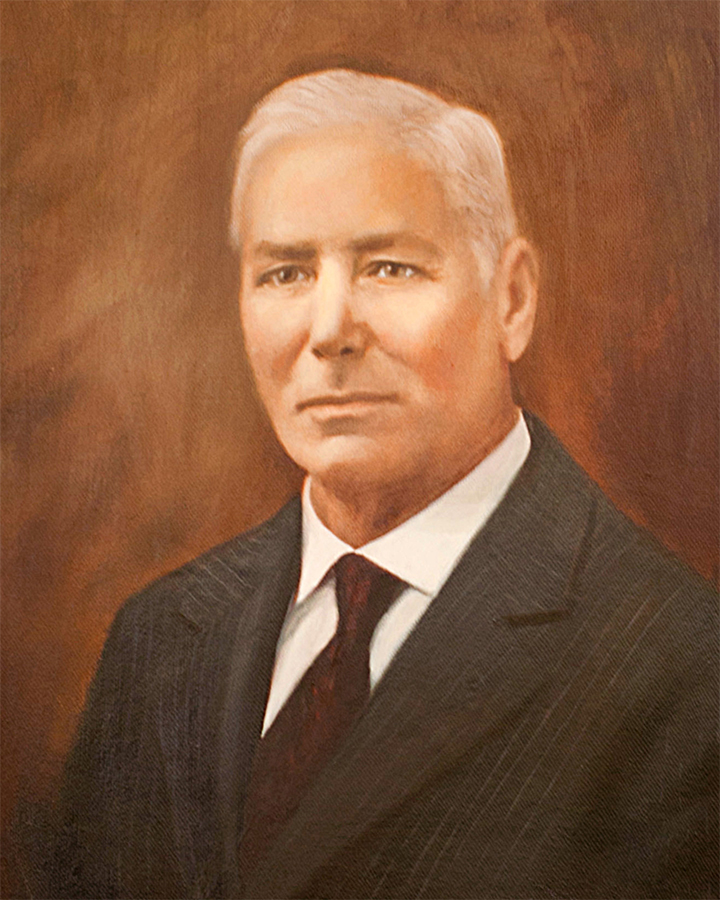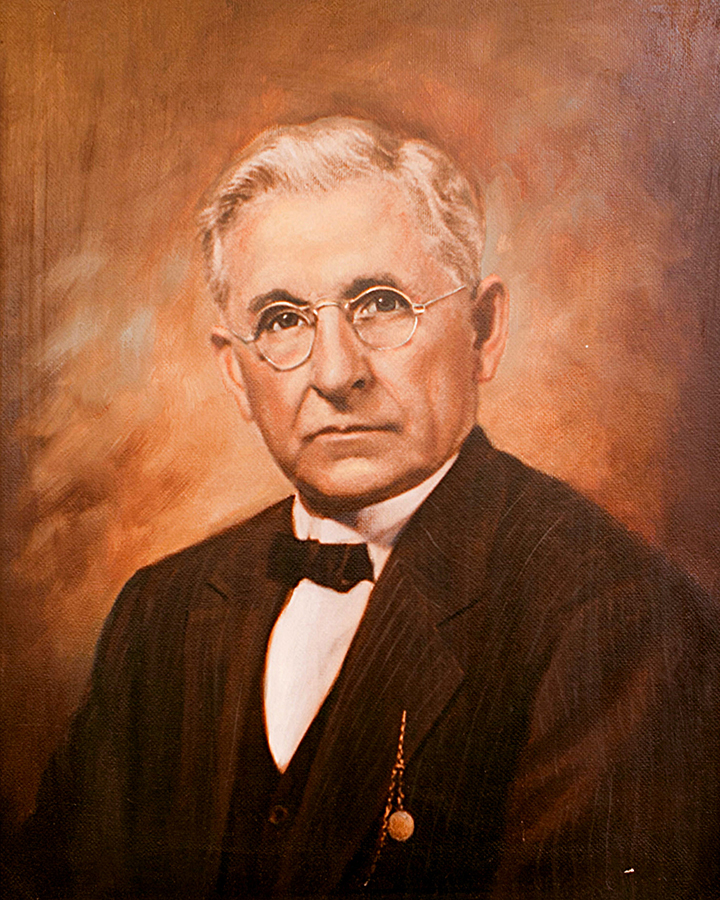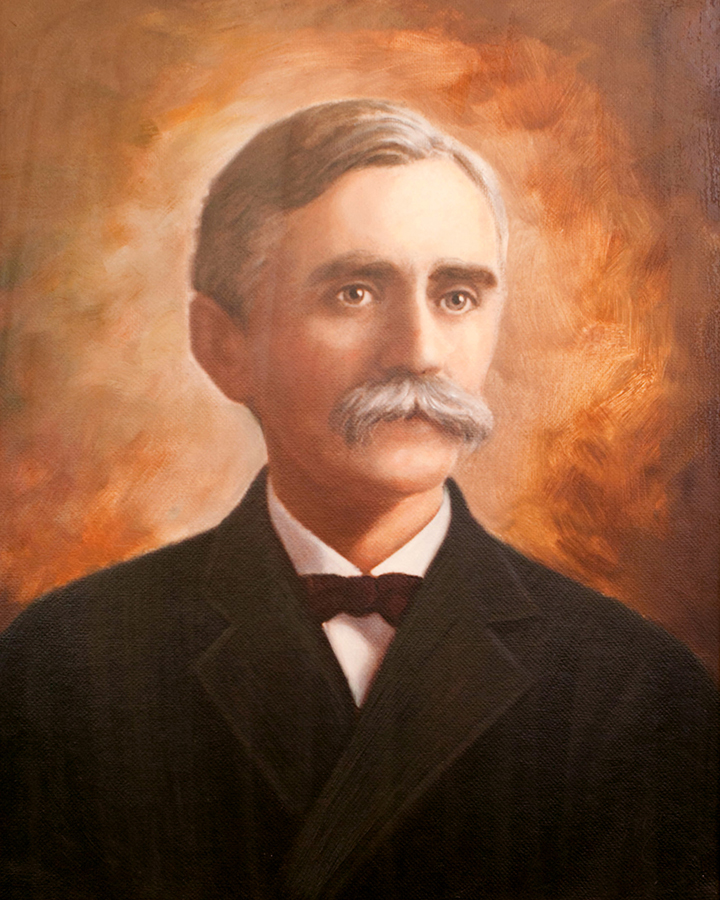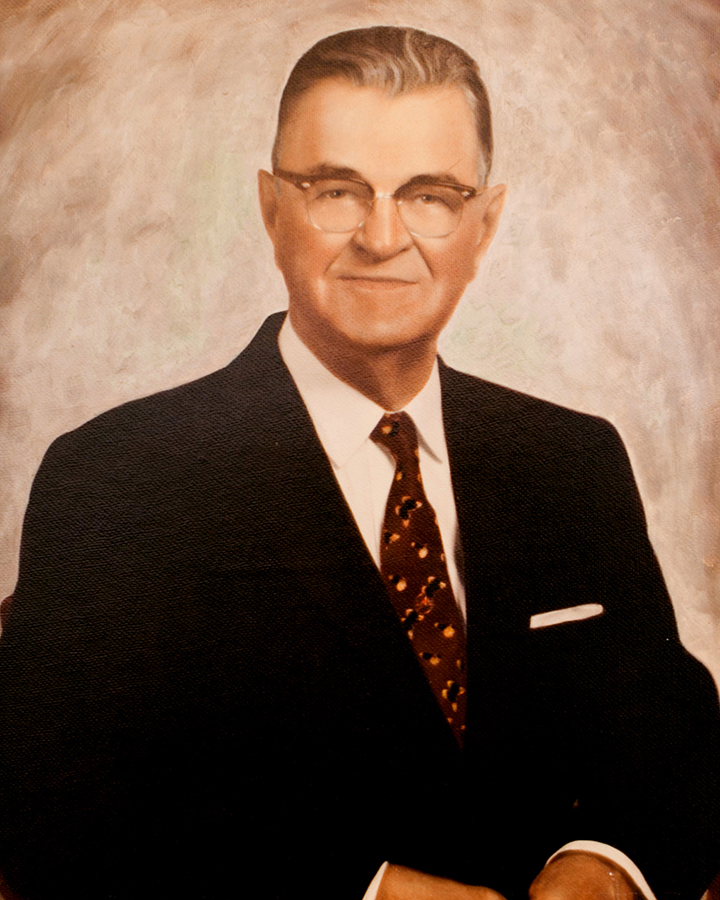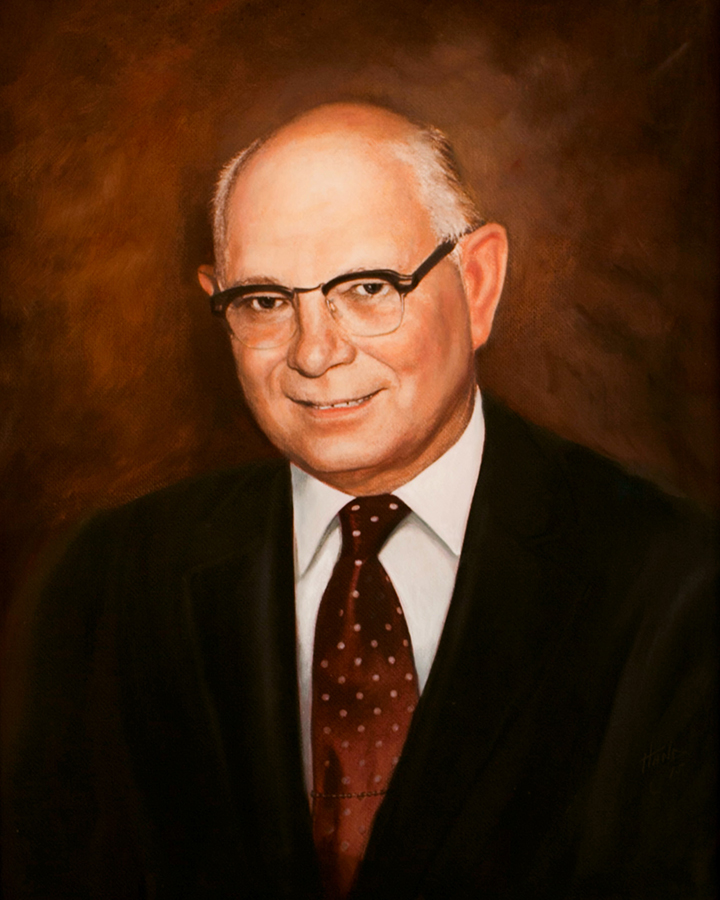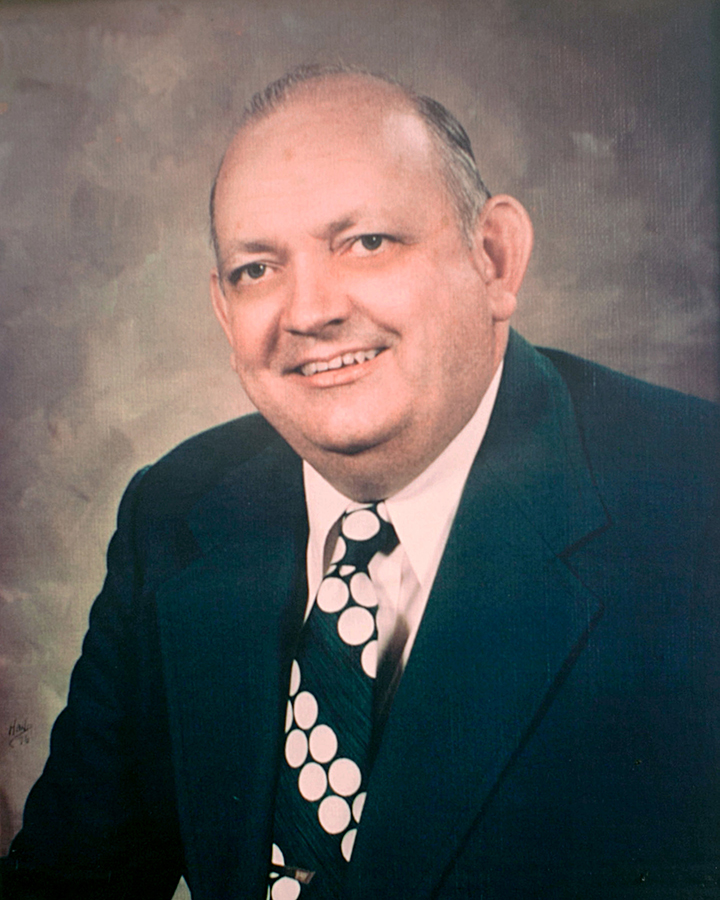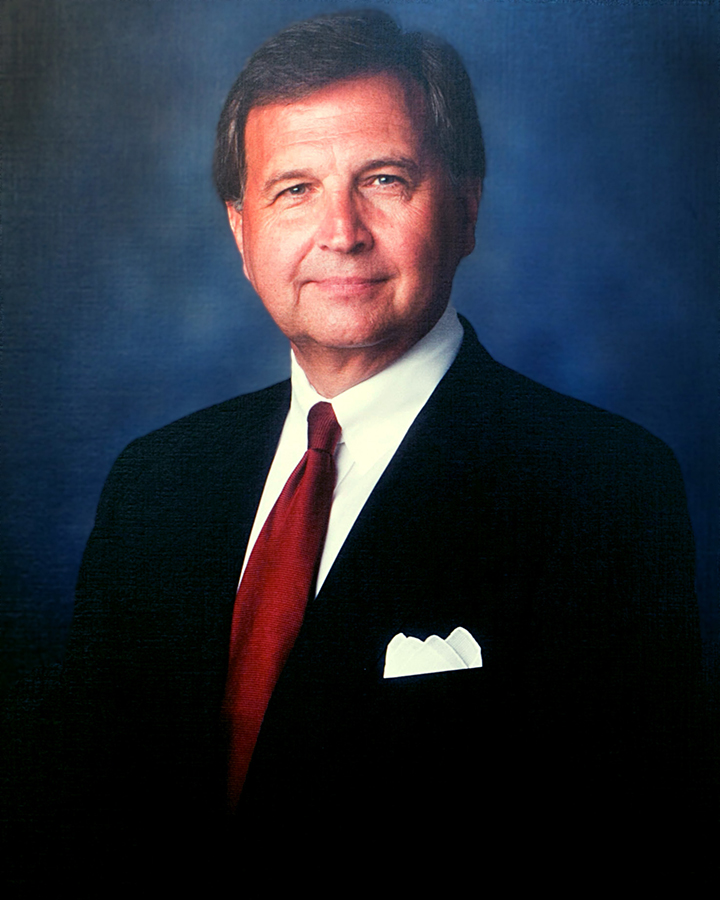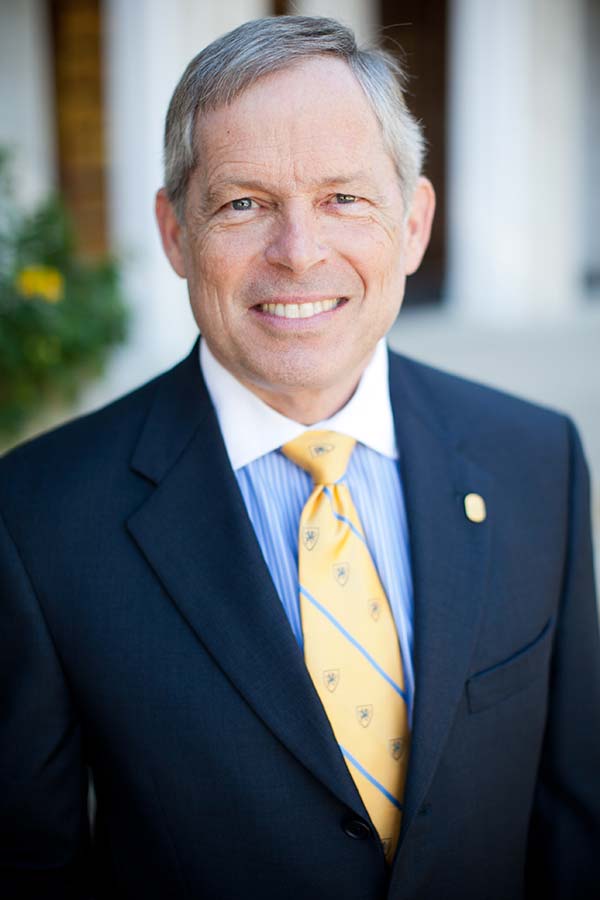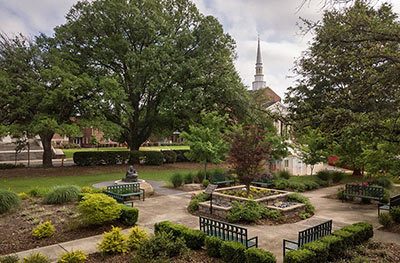F. G. Hopkins
Combining leadership and classroom skills, F.G. Hopkins made history as the first teacher or principal at Hampstead Academy, the original name of Mississippi College. In recent years, historians say they really know little about Hampstead’s initial administrator and instructor. Mr. Hopkins was deemed a capable administrator and teacher as Hampstead Academy was birthed on a five-acre-acre plot near the Mt. Salus community (now Clinton). The school welcomed its first group of students in January 1827. The pupils advanced their literary skills and were instructed about morals in small classrooms one year after the school’s charter was granted in 1826. What does Charles Martin’s “Mississippi College With Pride” say about Mr. Hopkins?
Mr. Hopkins, the book says, taught classes in the Mt. Salus area’s neighborhood school the previous academic year before coming to Hampstead Academy. His brief tenure was marked by one significant change. By February 1827, Hampstead Academy was renamed Mississippi Academy. The first public announcement about the school appeared in April 1827. It spoke in glowing terms about F.G. Hopkins. The Mississippian is praised as a “young gentleman of moral, genteel deportment, who is well-qualified as a teacher.” Richard McLemore’s book “The History of Mississippi College” notes that this MC pioneer focused on the morals and manners of the 30 male and female students.
Daniel Comfort
New York native Daniel Comfort succeeded F.G. Hopkins, likely in 1828. Born April 29, 1785 in Orange County, New York , Comfort graduated from Princeton University. At the prestigious Ivy League school in New Jersey, he studied both literary and theological programs. Dr. Comfort taught ancient languages as a Princeton professor for several years. In addition, he served as an ordained Presbyterian Church minister. But Dr. Comfort didn’t stay very long in the Northeast. He moved hundreds of miles south to Kentucky in 1812 or 1813 where he preached the Gospel. A throat difficulty made it impossible to carry on his ministerial duties in the Bluegrass State. That illness may have contributed to his move to Mississippi in 1827 to land a job as leader of Mississippi Academy. For the rest of his life, he stayed connected with Mississippi College as a teacher, scholar, administrator, board member and Christian philanthropist. He and his wife, Martha Ann Cruzer, stayed busy as parents with four sons and four daughters. During his tenure, MC received loans to construct buildings, obtained gifts from patrons and friends and managed to grow. Highlighting his administration, two young ladies, Alice M. Robinson and Catherine Hall, received MC diplomas and gold medallions at the first commencement in school history in December 1831. That’s believed to be a first among America’s co-educational institutions! About three years later, the town of Clinton (population 3,500) was established in 1834. Dr. Comfort resigned as president on January 1, 1842.
I. N. Shepherd
Following Daniel Comfort's first term (1827 to 1834), I.N. Shepherd is listed as principal, but little is known about him. Shepherd headed the school's Male Department.
E. N. Elliott
In October 1836, professor E.N. Elliott, an alumnus of Indiana University, was named the MC president. He took over in January and resigned in November 1837, with Comfort returning as Mississippi College president until January 1, 1842.
Alexander Campbell
Rev. Alexander Campbell, a Presbyterian minister, succeeded Dr. Comfort as president. He accepted the offer in January 1842 with the understanding that the school would be offered to the Presbyterians. That offer was finalized in April 1842. With his leadership, the faculty grew to a half-dozen instructors. Campbell helped obtain a number of donations to enhance the school library. The collections were so numerous, it required the Masonic Lodge to give up room the group utilized in the college building. Back then, some faculty members earned a whopping salary of $50 per month! Campbell continued to serve on the MC Board of Trustees during his presidency. He resigned as president in 1844, but continued to lead “the female school” at the college.
Robert McLain
In June 1844, Rev. Robert McLain, a professor of mathematics and natural philosophy, was elected president pro tempore. He served just one year, with Daniel Comfort returning to the presidency in 1845-46.
Simeon Colton
Rev. Simeon Colton was selected MC president following splits in the Presbyterian church across Mississippi. The Fayetteville, North Carolina minister was inaugurated July 30, 1846. His inauguration speech dwelled on the purpose and process of education. He emphasized adequate time for learning, hard work, personal discipline and a solid foundation of moral and religious principles. Blaming church conflicts and the lack of financial support, Colton resigned in late July 1848 and returned to accept a position in North Carolina.
Consider Parish
The Rev. Consider Parish took office as president on July 29, 1848. Reports show trustees elected him to operate the school on his own, without financial support from the board, except for a $200 income supplement. There were four A.B. degrees granted by the college in 1849. By July 1850, trustees decided the school’s financial situation was “hopeless.” At the request of the board, the Clinton Presbytery dissolved all ties with the college. A selection panel from the board replaced those connected with the Presbyterian Church and Rev. Parish resigned as president.
Isaac Newton Urner
Mississippi College battled a financial crisis, but never closed its doors during the turbulent Civil War years. In the early 1860s, the War Between the States provided the biggest challenge facing the administration of President Isaac N. Urner. The Pennsylvania native led Mississippi College from 1850 through 1867. An 1845 Dickinson College graduate, Urner relocated to Southern soil as a South Carolina teacher. He gained admission to the Law and Equity Courts of South Carolina when he was chosen principal at Mississippi College in August 1851. Urner guided the school during its first session under new Baptist leadership.
Mr. Urner prioritized repairs to buildings and equipment, mostly with borrowed money. Enrollment gains were priorities, too. Mississippi College’s 1851 session began with 17 students, but numbers climbed to 84 by year’s end. Raising money was another skill, and in 1852, the president launched an endowment campaign to raise $100,000. By 1861, enrollment grew to 230 students to make Mississippi College the largest college in the Magnolia State. Mississippi College student numbers topped levels at all but two of 21 Baptist colleges nationwide. Construction of a new chapel (now Provine Chapel) remained a cornerstone of Ulmer’s presidency when it opened in 1860 at a cost of $25,000.
During the Civil War, Confederate and Union armies moved throughout the Clinton area and onto bloody battlefields in nearby Vicksburg. There was even a report of one small skirmish on campus during Urner’s presidency. MC’s involvement in Civil War campaigns was more than an historical footnote. At Mississippi College, the Mississippi Rifles was the name of the fearless college students, faculty and citizens marching off to battles in Northern Virginia. Few returned home. On the Clinton campus, buildings became hospitals for wounded troops, including those of Northern Gen. Ulysses S. Grant. In 1865, the war ended, but the region’s hardships remained. Southern schools like MC stood on the brink of financial ruin. Deteriorating campus buildings badly needed repairs. President Urner felt the impact and received no salary during the war years. But a drive collected $6,000 to pay the president as he retired. In appreciation of this scholar and “high-toned Christian gentleman,” the college awarded him an honorary degree of doctor of laws. Urner returned to his native Pennsylvania where he died in 1904.
Walter Hillman
A new Mississippi College leader from the Northeast emerged as the South struggled in the post-Civil War years. Succeeding Urner, the Rev. Walter Hillman faced enormous challenges, but received little compensation. He earned $1,000 annually as president starting in September 1867. He continued to hold a second job as president of the Central Female Institute in Clinton. During his first year, the college’s low enrollment was the chief concern. There were just two MC freshmen and nine preparatory students on campus. By his final year, there were 190 students enrolled. Due to enrollment gains, financial improvements and support from the Mississippi Baptist Convention, historians lauded MC’s second Baptist president. Hillman was born January 9, 1829 on the island of Martha’s Vineyard in Massachusetts. His father was a sea captain in the whaling business. Hillman earned his bachelor’s degree at Brown University in Providence, Rhode Island in 1854, but soon moved to Mississippi College. The Baptist college needed a math and science professor, and led Urner to contact Brown officials. He and his wife, Adelia, formed a splendid team. She accepted a faculty position at the Central Female Institute in Clinton. By 1856, Hillman became the institute’s president of the institute and served until his death in 1894. The Central Female Institute was renamed Hillman College in 1891 and merged with MC in the early 1940s. Today, Hillman College artifacts are displayed in the Clinton Visitor Center. ”Mississippi College With Pride” sums up the administration of Walter Hillman as “a return to successful operation when failure seemed inevitable.”
Warren Sheldon Webb
Warren Sheldon Webb offered solid leadership as Mississippi College’s third Baptist president from 1873 through 1891. Rev. Webb accepted the job on the Clinton campus after working as an MC instructor and pastor at local churches in Clinton and Brandon. A native New Yorker reared in a Baptist home with 13 other siblings, Rev. Webb possessed presidential experience before taking the reins at Mississippi College. The Colgate University graduate served as president at the Yalobusha Female Institute in Grenada, Mississippi beginning in 1851. On the Clinton campus, the MC administrator organized several schools: Greek, Latin, English, Mathematics, Natural Science and Moral Philosophy, with a military school added in 1880. As president, Webb received a $1,500 annual salary and lived in a house rent-free. Rev. Webb helped the Baptist college survive tough times when economic conditions across the United States skidded to a low ebb. Economic woes were widespread in Mississippi where cotton reigned as the state’s kingpin. Rev. Webb laid the foundation for a bright future despite Mississippi College’s deep financial struggles. With tuition priced at an affordable $50, MC reported an enrollment of 145 students in 1874-75. That topped such Southern Baptist schools as Baylor, Furman, Wake Forest and Howard (now Samford). Enrollment grew to 250 students during his final year in office. Webb’s own children helped MC’s numbers grow. Five boys graduated from Mississippi College and five daughters graduated from the Central Female Institute (later Hillman College). The Latimer-Webb Hall was later built and named in his memory. The residence hall was also named as a tribute to his son-in-law, Murray Latimer. Another campus facility, the Latimer House, was acquired by the college in 1969. It serves as a frequent gathering spot for alumni and overnight guests. The Latimer House today remains one of the enduring legacies of the Webb administration.
Robert Abram Venable
Robert Abram Venable made school history in 1891 as the first Mississippi College graduate to serve as the institution’s president. Born in Georgia in 1849, his family moved to Arkansas about 20 years later. Venable’s path to Mississippi College was literally quite a bumpy ride. In 1871, with only 75 cents in his pocket, the Baptist gentleman rode a mule from Camden, Arkansas to Clinton, Mississippi to enroll at Mississippi College. Five years later, R.A. Venable graduated No. 1 in his class on the Clinton campus in 1876. The following year, he married Fannie Webb, daughter of President Webb. After two years of teaching in Arkansas and Mississippi, Rev. Venable pastored Baptist churches in Helena, Arkansas and Memphis, Tennessee until his election as MC president in 1891. Dominating the early years of his administration was a proposal to move the college from its home in Clinton to a 30-acre site 90 miles away in Meridian. After initially winning Mississippi Baptist Convention approval in 1892, the plan was rejected one year later. Dr. Venable also taught Greek and made a year of Bible study an MC degree requirement in 1893. In 1895, Venable resigned to become pastor of First Baptist Church Meridian and later serve as president of Mississippi’s Clarke Memorial College. A two-year school, Clarke was part of MC until closing its doors in the early 1990s.
John William Provine
Mississippi College’s oldest building, Provine Chapel, is named for one of the university’s most prominent presidents. The historic chapel opened to serve students, faculty and the Clinton community in 1860. Six years later, John William Provine was born in 1866 on a 4,500-acre family farm in Calhoun County, Mississippi. He was a brilliant scientist and natural science professor at Mississippi College in the early 1890s before being elevated to serve as the institution’s president in 1895. Dr. Provine served as the school’s leader for two periods, from 1895 through 1898 and from 1911 through 1932. After a series of campus improvements, including expansion of the science building, the installation of running water, repairs to the chapel and a campus bath house, hard times hit MC and much of the state prior to the Fall 1897 term. It was the outbreak of a deadly Yellow Fever epidemic. While no students at MC caught the fever, enrollment plunged to a little more than 115 students. And that caused a major budget shortfall. Due in large part to the epidemic, Provine resigned as president and June 1898. He returned to teach science at Mississippi College.
During John William Provine’s second administration as president, Mississippi College received national accreditation, enjoyed a construction renaissance and struggled with big debts during America’s Great Depression.
Dr. Provine’s effective leadership from 1911 through 1932 transformed MC into the modern era. With Dr. Provine returning from academic ranks once again to become president, friends of the college believed the future looked bright.
Winning the accreditation endorsement of the Southern Association of Colleges and Secondary Schools in 1922 was key to the argument that Mississippi College’s academic programs remained on the rise nationally.
The political life of the Magnolia State during the early stages of the 20th Century was dominated by two Mississippi College graduates, Govs. James K. Vardaman and Theodore G. Bilbo.
In many ways, Provine was just as powerful a player in the life of Mississippi College. In 1916, he established a Department of Physical Culture in 1916 and made participation in daily exercise a requirement for every student on the Clinton campus.
Building projects during the Provine era turned the Clinton campus into a modern institution that could compete for students with sister colleges across the South. In 1926, Mississippi College’s centennial year, the Ratliff Hall dormitory for men, the Hall-Farr Infirmary, Alumni Hall (with its modern indoor swimming pool and basketball courts), and Chrestman Hall, were all constructed. Created that same year, the Mississippi College Band was led by George H. Mackie, the composer of the school’s alma mater. During America’s Roaring Twenties, there was much to roar about at Mississippi College!
Also happening during the Provine era, in 1920, MC Choctaws intercollegiate athletics received a big boost with the hiring of extraordinary head football coach Stanley Robinson. Coach Robinson’s teams racked up 156 football wins through the 1950s and achieved many more baseball triumphs. Robinson-Hale football stadium today salutes Coach Robinson as well as MC Choctaws football legend Edwin “Goat” Hale.
The string of major accomplishments for Mississippi College grinded to a sudden halt because of the devastating financial panic sweeping the United States and the rest of the world. The economic skid resulted from the collapse of the New York Stock Exchange in October 1929, and triggered a swift downward spiral for millions of Americans that lingered for years. Bread lines in major cities, widespread poverty, unemployment and a sense of despair impacted cities from New York to San Francisco. It brought hopelessness to communities in small-town America, and towns in Mississippi were no exception. MC enrollment plunged, contributions to the school stopped and the school’s deficit bloated to more than $63,000 in 1930.
In the midst of this financial emergency on the Clinton campus, Dr. Provine felt it was in the best interest of the struggling college for him to resign in May 1930. He stayed on until President Dotson McGinnis Nelson succeeded him in June 1932.
William Tyndale Lowrey
The Mississippi Baptist Convention selected William Tyndall Lowrey to return to his alma mater as Mississippi College president in June 1898.
Succeeding J.W. Provine who resigned to return to teaching, Lowrey was the MC president faced with fighting a deadly Yellow Fever epidemic and shrinking enrollment.
Lowrey left as president at Blue Mountain College in North Mississippi and turned that job over to his younger brother before going to work on the Clinton campus.
Presidential experience was deeply embedded in Lowrey’s blood.
Born near Booneville, Mississippi on March 3, 1858, Lowrey was the oldest of six sons of General M.P. Lowrey. Growing up on a family farm, he graduated Mississippi College ranked No. 1 in his class in 1881. Following graduation on the Clinton campus, he entered the Southern Baptist Seminary in Louisville, Kentucky. In February 1885, W.T. Lowrey left the seminary before completing his senior year due to the death of his father, General Lowrey, founder and president of Blue Mountain College. The younger Lowrey succeeded his father as Blue Mountain president, pastored churches in the North Mississippi area and rose to become a major figure in Mississippi Baptist circles by the early 1890s.
First hitting the Magnolia State in 1878-79, Yellow Fever returned to Mississippi in 1897-99, and saw MC enrollment plunge to 140 students. As a result, the school’s budget stayed in trouble. In addition, MC faced growing competition for students from in-state schools like Ole Miss and Mississippi A&M College (Mississippi State) and Millsaps. In 1899, President Lowrey personally canvassed the state to seek students and his hard work achieved results. Even though Yellow Fever came as close as Jackson, enrollment rose to 231 students in1899-1900. It kept climbing to a peak of 460 students in 1908 before dropping into the 300-range due to America’s financial woes. Lowrey relied on students to become college recruiters and that proved very effective. He encouraged the creation of the 500 Club, a student organization that sought to boost enrollment to 500 students. Besides building student numbers, Lowrey found success as a fund raiser.
Thanks to financial help from the family of Captain Z.D. Jennings of Water Valley ($20,000), support from the General Education Fund of New York, funds from the college and funds from philanthropist Andrew Carnegie, Mississippi College was able to construct Jennings Hall in 1906-07. The modern student housing facilities included new dormitories rated among the finest on Southern campuses (with running water and steam heat) and a new dining hall. The cost of the two buildings was $70,000. Lowrey’s administration concluded in 1911, with that year seeing the completion of a science building later named the Provine Science Building. Lowrey also was able to build support for the college statewide through a series of articles he penned for “The Baptist.” During Lowrey’s administration, the president and a secretary managed the college’s business affairs. But those duties kept increasing and paved the way for the hiring of a business manager of the growing Baptist institution in Clinton.
Dotson McGinnis Nelson
Nelson Hall, the Christian university’s prominent three-story administration building with its landmark clock tower on top celebrates the Mississippi College presidency of Dotson McGinnis Nelson.
Succeeding an MC icon like John William Provine, Dr. D.M. Nelson managed to add to Provine’s legacy and led the way to positive developments through the 1950s.
During the Nelson era, MC merged with all-female Hillman College in Clinton, served as the training ground for Navy officers during the World War II era, saw faculty ranks grow dramatically and helped boost enrollment to record numbers.
A 1907 Mississippi College honors graduate, Nelson guided his alma mater through America’s Great Depression, World War II and the Korean War. The former MC physics professor helped the school overcome major obstacles to open doors to a bright future.
A construction renaissance sought to keep pace with skyrocketing MC enrollment during the Nelson years.
Since Jennings Hall couldn’t contain the expanding enrollment of women students, twin dormitories, Hederman-Gunter Hall, featuring a common lobby, were added in 1948. That was the year that Nelson Hall, with Swor Auditorium, administrative and faculty offices and classrooms, opened on the Clinton campus.
The Navy V-12 program contributed a great deal to MC’s rising enrollment during the 1940s. MC was among 131 colleges offering this training to future Navy leaders from 1943 through 1945. V-12 enrollment averaged 319 men during the school’s growth years.
With World War II ending, enrollment in 1946 stood at 845 students. Many soldiers pursued higher education at schools like Mississippi College around the nation under the G.I. Bill. Ten years later, that number climbed to 1,581 MC students, including 115 in Graduate School.
Fast forward to 1954, and Mary Nelson Hall was completed that year with wings were added to Ratliff Hall for the male students. A band hall, enlarged library space at the Lowrey building and temporary space for married students were other legacies of the Nelson years.
The building boom plus student growth spelled a fairly robust financial situation for the college. MC operated at a profit and all college debts were retired. That’s a remarkable turnaround for an institution struggling with debts of more than $228,000 during Nelson’s first year in office when America battled the Great Depression.
Concluding an extraordinary 25 years of service as president, Dr. Nelson served as the school’s leader through early September 1957.
After delivering the keynote speech at his final commencement in Swor Auditorium, faculty, student body leaders and MC trustees hailed Dr. Nelson’s many contributions to the Clinton campus and community. Some of the president’s classmates from the MC Class of 1907 joined the salute to Dotson McGinnis Nelson.
Richard Aubrey McLemore
Born near Hattiesburg in 1903, Richard Aubrey McLemore was the son of public school teachers who rose up the ranks to become a college president. A physics major at Mississippi College, he returned to his alma mater in Clinton as an effective successor to President Nelson in September 1957.
A former dean and acting president at Mississippi Southern College, Dr. McLemore proved to be a capable leader. He presided over a major building program at MC, including a new Leland Speed Library, Aven Fine Arts Building and B.C. Rogers Student Center. The university’s Provine Chapel was renovated and two new dorms were added: Latimer-Webb for women in 1961 and Whittington Hall for men one year later. Self Hall was constructed in 1964 to become the new home of the Division of Business and Economics.
McLemore’s tenure in Nelson Hall began with a history-making moment – the first inauguration for an MC president on March 19, 1958. The event attracted such luminaries as Mississippi Gov. J.P. Coleman. Times were changing in other ways at a growing MC. A single campus night watchman was replaced by a campus security system. Academic reorganization was happening as well, with 24 departments organized into eight divisions in 1961.
The most divisive issue facing the college during the McLemore era involved the federal Civil Rights Act of 1964. McLemore advocated signing the compliance statement. It stated that USA institutions must sign it in order to receive federal funds beginning in 1965.
While polls showed the majority of MC faculty and students favored signing the compliance statement, it was opposed by the Mississippi Baptist Convention in 1966. It led McLemore to resign as president and he stayed on through June 30, 1968. Before he stepped down, the Clinton Chamber of Commerce saluted Dr. McLemore as its inaugural “Citizen of the Year,” in 1967. The honor in MC’s hometown of Clinton continues today.
Lewis Nobles
William Lewis Nobles was an acclaimed research scientist and noted administrator at the University of Mississippi when he was selected in 1967 to become Mississippi College’s president.
A Meridian native, Nobles served as leader of the Baptist-affiliated college beginning on July 1, 1968 and remained in office at Nelson Hall for a quarter-century.
There was considerable construction growth during his administration. New facilities on the Clinton campus included Cockroft Hall, home of the School of Nursing in 1976, the A.E. Wood Coliseum in 1977, and the Lanier Physical Plant Building in 1970.
One of the cornerstones of the Nobles era was the university’s acquisition of the old Jackson School of Law. It became the MC School of Law in 1975 with classes beginning on the Clinton campus. Mississippi Valley Gas Company donated its headquarters in downtown Jackson in 1978, and it remains the home of the MC School of Law today. MC Law’s national accreditation was a major achievement of the Nobles years.
Dr. Nobles was also instrumental in the college signing the Civil Rights compliance agreement. That made it possible for the school to receive federal loans and grants for students, including a growing number of USA veterans.
The creation of the MC School of Nursing starting in 1969-70 was another major milestone for the college under his leadership. It happened after the Baptist Hospital in Jackson announced it was ready to phase out its nursing school. Mississippi College graduated its first class of nursing grads in 1973, including Mary Jean Padgett, who became the MC nursing dean in 1995.
There were other firsts during the Nobles era.
Gayle Long became the first female student body president in 1972. Today, she’s the wife of U.S. Sen. Roger Wicker. The Mississippi College Sports Hall of Fame began in 1973. An annual gathering of the 50-Year Club (of graduates) took root in 1977. MC sports teams thrived during his administration, with the Choctaws winning the NCAA Division II football championship game on a snowy field in Florence, Alabama in December 1989. In 1974, the Lady Choctaws basketball team took 2nd place in the national basketball tournament.
Enrollment during the Nobles years rose, and there were academic and financial gains as well. The number of both full-time and part-time students, doubled. The university’s endowment multiplied six-fold. Annual fund giving soared to 28 times what it had been in 1968.
Active in Baptist life as a young man and as an adult, Nobles rose up the educational ladder in the Magnolia State and beyond. A 1948 pharmacy graduate at Ole Miss in 1948 with a doctorate at the University of Kansas in 1952, Nobles was awarded a National Science Foundation postdoctoral fellowship at the University of Michigan in 1958-59. A former Ole Miss professor, he returned to Ole Miss as graduate school dean on the Oxford campus in 1960. Eight years later, the Board of Trustees selected the Mississippian to lead MC.
His 25-year tenure spanned impressive gains for the college, but also was marred by controversy receiving national media attention towards the end of his administration. Dr. Nobles resigned in August 1993 with Dr. Rory Lee, vice president for institutional advancement and an MC graduate, named Mississippi College’s acting president.
Rory Lee
A familiar face on the Clinton campus for decades, Dr. Rory Lee was a popular choice as acting president prior to the selection of President Howell Todd in March 1994.
The MC vice president for institutional advancement who earned his bachelor’s degree from MC in 1971, Lee served effectively. An MC administrator for 20 years, he helped MC achieve new records in terms of financial contributions and enrollment.
Following Todd’s arrival as president on the Clinton campus, Lee returned to serve his alma mater as vice president for institutional advancement. In 1996, the Mississippian was named president of William Carey College and later served as Louisiana College president. Today, Dr. Lee leads the Mississippi Baptist Children’s Village.
Howell W. Todd
Howell Todd’s seven-year presidency was marked by notable building improvements, academic advances and the New Dawn Campaign.
A native of Huntington, Tennessee, Dr. Todd served as executive director of the South Dakota Board of Regents through 1994 before returning South to take the leadership reins at MC.
At his inauguration on April 28, 1995, Todd called for a new commitment to building the university’s heritage and character as Mississippi College approached the 21st Century.
One of the first steps during his seven-year administration was the development of MC technology, including a state-of-the art computer system.
But many more changes were just ahead on the Clinton landscape, including construction of a first-class 72,000-square feet fitness facility (the Baptist Healthplex) in 1997. Shared by Mississippi College and Baptist Hospital in Jackson, the facility was heavily utilized by the entire MC family as well as the community in metro Jackson. New residence halls, with the latest connections for telephones, TVs and computers, were some of the features along with a stylish dome on top.
Under the Howell Todd presidency, a new academic building connected to the Hederman Science Building and Self Hall was completed in 1999. The facility provided more space for the Department of Mathematics and Computer Science as well as organic chemistry. Meanwhile, one of MC’s landmarks as the administration building since 1948, Nelson Hall received extensive renovations - from its signature clock tower to the basement.
The Mississippi College building renaissance was really just getting started during the Howell Todd Era. There were major renovations to the B.C. Rogers Student Center, including a much-improved food court. Modern tennis courts and a women’s softball field were built, too. And Alumni Hall that was home of a basketball gym and indoor swimming pool when it opened in 1926 received a facelift. The work included space for a bookstore and campus post office. With the opening of the New Women’s dorm, there were 1,550 students living in MC campus residence halls.
Generating many of the campus improvements was the New Dawn Campaign, with Dr. Todd announcing the ambitious plan in 1997 to raise $80 million in five years. It helped pay for significant upgrades of MC facilities.
In the arena of athletics, changes were happening as well. Mississippi College exited NCAA Division II and the Gulf South Conference in 1996. The Christian university switched to NCAA Division III and joined the Texas-based American Southwest Conference in 1997.
After grappling with MC budget challenges, Dr. Todd announced his retirement in February 2001 to devote more time to church and family. College trustees thanked the tall Tennessean for his service and the “unmatched progress” that Mississippi College made during his seven-year tenure.
An MC business professor and vice president for business affairs, Lloyd Roberts succeeded Todd as interim president in July 2001.
One of the lasting signs of Dr. Todd’s presidency remains the large spinning globe and fountain outside Jennings Hall. It’s always a popular spot for visitors to the Clinton campus to take photographs. Todd dedicated the “kugel” in memory of his parents.
Lloyd Roberts
MC also reported gains during the interim presidency of Dr. Lloyd Roberts, former vice president for business affairs.
His duties as the university’s temporary leader began July 1, 2001. Dr. Roberts joined the MC faculty as professor of economics and chair of the Department of Business Administration in 1982. Under his administration, MC upgraded food services, expanded campus maintenance and revamped business operations. With Dr. Lee Royce arriving as president in July 2002, Roberts became the institution’s senior vice president for administration and chief financial officer. Today, Roberts serves MC as a business professor.
Lee Royce
Lee Gardner Royce provided extraordinary service as Mississippi College’s 19th president from July 2002 through June 2018. Under Dr. Royce’s leadership, the Christian university experienced record enrollment growth, added new academic programs and enjoyed financial success along with a construction renaissance.
Dr. Royce pursued the institution’s vision “to be recognized as a university known for academic excellence and commitment to the cause of Christ.”
The legacy of Lee Royce and his wife, Rhoda, will live on at Mississippi College. The Royce Medical Science Center is named for the retired Mississippi College leader. The Rhoda Royce Prayer Garden near Alumni Gym remains a beautiful, quiet place for visitors to draw closer to God.
Beginning in Fall 2018, the Lee and Rhoda Royce Servant Leadership minor in the School of Education is another tribute. That’s also the case for the endowed Royce student scholarships. Dr. Royce received an honorary Doctor of Laws degree from the MC School of Law in Jackson.
The Royces retired to Northern Virginia to live near their son, Dr. Mark Royce, a college instructor.
The former president of Anderson University in South Carolina, Dr. Lee Royce went to work to enhance Mississippi College finances. Concluding in 2011, Mississippi College’s Growing the Vision Campaign raised $87.4 million. The money went for academic programs, scholarships, the university’s endowment, construction and other initiatives.
Since Dr. Royce arrived in 2002, enrollment grew from 3,200 students to nearly 5,200. Among the key accomplishments, the nine international students in his first year rose substantially. Today, international students come from 43 nations.
The institution’s budget nearly doubled to $75.5 million under his tenure. Construction of the first new residence halls in nearly 20 years, new facilities for athletics, and the modern medical science building reflect the construction boom. The creation of the Spring Scholarship Dinner in 2008 attracted prominent speakers to the campus including former U.S. Secretary of State Condoleezza Rice and former Florida Gov. Jeb Bush while raising more than $3.6 million.
In February 2014, Dr. Royce received the outstanding executive leadership award from the Council for the Advancement and Support of Education’s District III South region in the South. Dr. Royce was recognized by the Clinton Chamber of Commerce as its Citizen of the Year.
During his administration, Mississippi College regularly received strong endorsements in national publications such as “U.S. News & World Report.”
Dr. Royce guided Mississippi College to make the move back to NCAA Division II and return to the Gulf South Conference for its sports teams. New academic ventures such as the state’s first physician assistant program began in 2011 and electrical engineering was launched a few years ago.
A native of Miami, Florida, Dr. Royce earned his bachelor’s in history, master’s in business management and doctorate in higher education administration, all at Vanderbilt University.
Blake Thompson
Dr. Blake Thompson became the 20th president of Mississippi College on July 1, 2018. Thompson’s diverse background includes leadership in higher education, international research, and the United States government. As Mississippi natives, the MC presidency represents a homecoming for Dr. Thompson and his wife, Jana.
Thompson was formerly vice president and secretary to the board of trustees of The Ohio State University (OSU). He held several leadership positions at 66,000-student Ohio State, one of the largest universities in the country. Thompson served as vice president for economic and workforce development, led the university’s Science and Technology Campus, and spearheaded the development of the endowed Battelle Center for Science and Technology Policy at OSU.
In addition to his duties with OSU, Thompson held a joint vice-president appointment with Battelle, the world’s leading nonprofit R&D organization, where he guided large-scale research, education, and philanthropic efforts. He has also served in Washington as a senior staffer to the U.S. Senate Appropriations Committee and to recently retired Senator Thad Cochran.
Thompson served as a volunteer leader with a number of philanthropic and civic organizations in Ohio, including KIPP Columbus, a public charter school; Rev1 Ventures, a technology-based business incubator; and Our Ohio Renewal, a nonprofit addressing social challenges. He was the founding board chair of The Thompson Institute, a campus ministry serving faculty integrating their faith with their profession.
Dr. Thompson and his wife, Jana, were raised in the small community of Rienzi, Mississippi, and operate a blueberry farm in North Mississippi. Both are graduates of the University of Mississippi School of Pharmacy. Thompson earned his doctorate in pharmaceutical sciences from Ole Miss and also holds an executive master’s degree from the Georgetown University School of Business. The Thompsons have three children, Grey, Sarah Blake, and Cate.
200 S. Capitol Street, Clinton, MS 39056
601.925.3000

